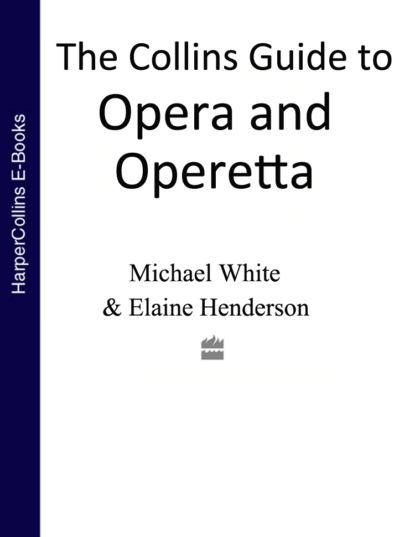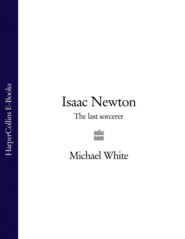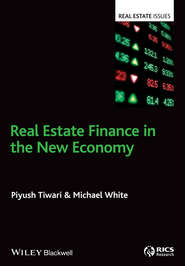По всем вопросам обращайтесь на: info@litportal.ru
(©) 2003-2024.
✖
The Collins Guide To Opera And Operetta
Автор
Год написания книги
2018
Настройки чтения
Размер шрифта
Высота строк
Поля
Baritone
Dede, Sam’s daughter
Soprano
François, Dede’s husband
Tenor
Synopsis of the Plot
Setting: Contemporary America
The funeral of Sam’s wife, Dinah, killed in a car crash, brings together the estranged members of her family: Sam Junior, his sister and her husband, François, who at one time was Sam Junior’s lover. Underlying tensions quickly surface and Junior’s mental instability becomes apparent. In the evening the four recall the history of their relationships with each other and with their dead mother. The next morning, after breakfast and games in the garden (the ‘quiet place’), they find that their hostility has given way to reconciliation.
Music and Background
The operatic equivalent of a Russian doll, A Quiet Place is actually one piece inside another: most of the middle act is the self-contained Trouble in Tahiti written thirty years earlier, and its music sounds markedly different to what comes before and after. The Tahiti sections are in lyrical, near-Broadway style, with sardonic contributions from a 1950s close-harmony trio who hymn the idealised joys of suburban life while the suburban characters, Dinah and Sam, demonstrate the bleak realities. The surrounding sections are musically more complex, less direct and less memorable – although Bernstein’s sense of melody is always there, not far below the surface.
Highlights
Almost all the best writing comes in the middle, Tahiti act, climaxing in a virtuoso comic monologue for Dinah, ‘Island Magic’, that would be pure Broadway but for its rhythmic complications, and finishing on a soaring, seriously dramatic duet, ‘Is there a day or a night?’, which is Bernstein at his soul-searing best.
Did You Know?
Bernstein wrote the libretto for Trouble in Tahiti himself, and the story is based on his own childhood memories, incorporating a peculiarly unflattering portrait of his parents.
Recommended Recording
Chester Ludgin, Beverly Morgan, Wendy White, Edward Crafts, Austrian Radio Symphony Orchestra/Leonard Bernstein. DG 419 761-1/2. The only one, recorded live at the Vienna Staatsoper.
Harrison Birtwistle (#ulink_adc1bd16-1236-5dc7-b937-1742f1f06fc1)
(1934– )
Punch and Judy (1967)
Down by the Greenwood Side (1969)
The Mask of Orpheus (1984)
Yan Tan Tethera (1984)
Gawain (1991)
The Second Mrs Kong (1994)
Birtwistle’s tough, dense, and often abrasively loud music has made him a sort of Public Enemy for some concert-goers, a fair number of whom filled the correspondence pages of British newspapers with letters of complaint after his raucous concerto for saxophone and percussion, Panic, was premiered at the last night of the 1995 Proms. But others find him a grainy, granite-hard successor to the English Pastoral composers of the early 20th century, with an underlying lyricism in his writing. And no one could deny that Birtwistle’s music is dramatic. Even his concert works have ritualistic theatre elements, and his stage works proper are usually based on mythical subjects which he adapts to the ritualised kind of story-telling which he has made his own, with events that repeat in cycles rather than unfold in linear terms. The Mask of Orpheus, for example, is a vast multimedia spectacle with electronic effects and a highly complex formal structure which recounts the myth of Orpheus in all its varying forms and different endings. Brought up in Manchester, Birtwistle was a student there at the same time as Peter Maxwell Davies and the careers of the two composers have progressed largely in tandem. Both now have knighthoods, and jockey for position as the leading creative figure in British music after Michael Tippett.
Gawain (#ulink_28918c14-0d78-521f-a344-9fc9605f460c)
FORM: Opera in two acts; in English
COMPOSER: Harrison Birtwistle (1934– )
LIBRETTO: David Harsent; from an anonymous 14th-century poem
FIRST PERFORMANCE: London, 30 May 1991
Principal Characters
Gawain, a knight and King Arthur’s nephew
Baritone
Morgan le Fay, a sorceress
Soprano
Green Knight/Bertilak
Bass
Lady de Hautdesert, Bertilak’s wife
Mezzo-soprano
Synopsis of the Plot
Setting: Arthurian Britain
ACT I While Arthur and his court are celebrating Christmas, the sorceress, Morgan le Fay, and her accomplice, Lady de Hautdesert, plan to undermine the court’s complacency and self-regard. The king is bored. Morgan le Fay promises him excitement. At that moment a mysterious Green Knight arrives with a challenge: he will allow himself to be beheaded but the knight who does the deed must present himself at the Green Chapel in a year and a day, and submit to a similar blow. Gawain accepts the challenge; he decapitates the Green Knight who, to everyone’s amazement, gets up and leaves with his head under his arm. The act concludes with a masque during which Gawain is prepared, spiritually, for his journey to the Green Chapel and his potentially fatal meeting with the Green Knight.
ACT II Gawain, on his way to the Green Chapel, finds shelter in the castle of Bertilak de Hautdesert. Bertilak issues him with another challenge: he will hunt for three days and exchange all he has caught for what Gawain can acquire in the castle. Spurred on by Morgan le Fay, Lady de Hautdesert tries to seduce Gawain while her husband is away. She gives him a sash with magical properties to protect him from death; he keeps it for his forthcoming confrontation with the Green Knight. Gawain is struck three times by the Knight, but is only grazed, and the Knight reveals himself to be Gawain’s host, Bertilak de Hautdesert. Gawain returns to Arthur’s court to be greeted as a hero. But knowing the truth to be otherwise – that he only survived the ordeal through the magic of the sash – he rejects the court’s empty praise and demands for tales of bravery and valour. The collective morale of the Round Table is punctured, and Morgan le Fay, who plotted all this, rejoices in her victory.
Music and Background
It’s no use pretending that this is easy listening. It isn’t; and the orchestral textures are so Wagnerian in scale and weight that you have to pay very careful attention to catch any of the words in performance. There are times when the whole score seems like a great machine grinding relentlessly away in an unbroken flow of (very noisy) sound. But repeated listening helps to sort out what’s going on – as is the case with any opera – and reveals the poetry within the punishment. Otherwise, Gawain packs a massive punch on stage; and the ritual theatre of the turning of the seasons at the end of Act I is a good example of the cyclic, ceremonial preoccupations of the composer.
Highlights
The arrival of the Green Knight on what Birtwistle calls a ‘noble pantomime horse’ is bizarre but breathtaking: you hear clip-clopping noises from the orchestra and in any other circumstance they might make you laugh. But not here. The effect is spine-tingling and awesome. For an example of how memorably melodic Birtwistle can be when he chooses, try Gawain’s repeated cries of ‘I’m not that hero’ in the final scene.
Did You Know?
Many commentators consider Gawain one of the supreme achievements of late 20th-century opera.
Recommended Recording









